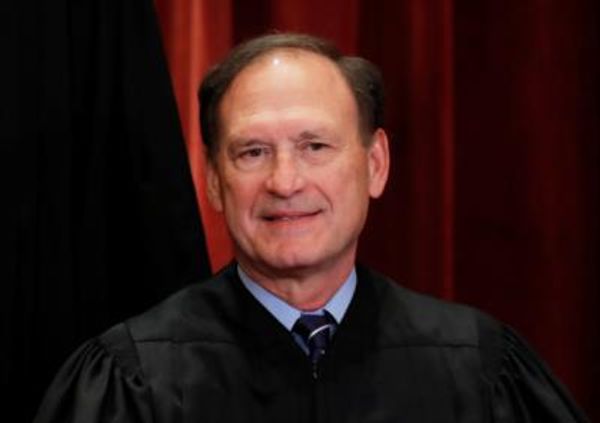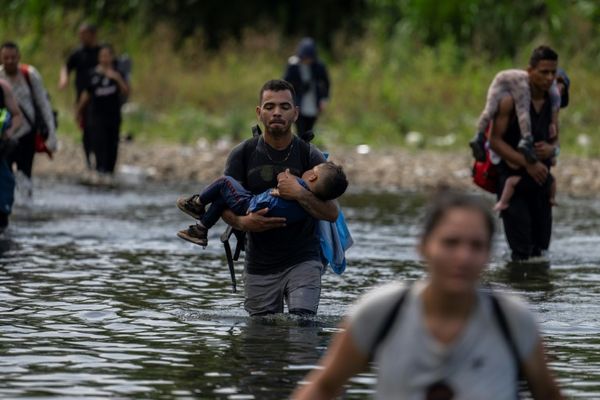The Centers for Disease Control and Prevention’s new program to get the next generation of COVID-19 vaccines to uninsured and underinsured Americans will likely not be ready in pharmacies by the time the new vaccines hit the market as early as this September, leaving millions of high-risk Americans in the lurch.
The change comes during a post-pandemic transition. The government has paid for Americans’ COVID-19 vaccines with every previous generation of COVID-19 vaccines, but with this next iteration of shots, the cost will switch to the commercial market.
The CDC said the uninsured and underinsured won’t be completely out of luck. While shots are not accessible in pharmacies, uninsured and underinsured individuals can get their COVID-19 shots at community health centers and state health departments.
But throughout the pandemic pharmacies have been a primary point of contact for vaccines. Nine out of 10 Americans live within five miles of a pharmacy, according to an analysis from the Journal of the American Pharmacists Association, while other health care points of contact can be much farther away.
‘Bridge’ delay
In March 2022, the Biden administration announced it had no more money, absent congressional action, to keep providing free vaccines to every member of the public. Instead, it put the onus on insurers to negotiate the price of the vaccines.
To prepare for insurers taking on price negotiation and to make sure the uninsured and underinsured still had access, the Biden administration announced in April of this year that it was setting up a partnership with pharmacies to deliver shots to the uninsured and underinsured at no up-front cost.
The so-called “bridge access program” would be a $1.1 billion public-private partnership between the CDC and pharmacies.
But months later, the government hasn’t been able to finalize partnerships with any pharmacies.
The CDC said it planned to negotiate contracts with CVS, Walgreens and eTrueNorth in order to provide pharmacy-based vaccination services to uninsured adults in low-access areas and areas of low vaccination coverage. But the companies are still in contract negotiations with the government, and it’s unclear when contract negotiations will be finalized.
“All of these are still in contract negotiation, so it’s really difficult to see what the implementation of this program’s going to look like in pharmacy,” said Edward Salaguinto, a pharmaceutical constant to the California Department of Public Health who is working to implement the state’s bridge program during an August 11 webinar.
The CDC is now targeting mid-October to get the pharmacy program up and running, according to multiple individuals working on the program — which could be about a month after the next generation of COVID-19 shots is expected to hit the market.
CVS, Walgreens, and eTrueNorth all declined to comment on the specifics of contract negotiations as discussions with the CDC move forward.
The National Association of Chain Drug Stores, which represents major retailers like CVS and Walgreens, said that it’s still waiting on additional information from the government about the bridge access program. The National Community Pharmacists Association, which lobbies for smaller pharmacies like the ones eTrueNorth represents, said many specifics of the program remain up in the air.
When the CDC announced the bridge access program in July, it had yet to figure out details about vaccine acquisition, distribution and reimbursement — and this is where it’s hitting a snag.
The CDC said it intends to reimburse pharmacies for the vaccine administration fees as a part of the program, but pharmacies are still working out if that reimbursement will cover their costs. Pharmacies also do not yet know how many vaccines they will receive from the agency and when.
“There’s still a number of elements of that whole thing that are undecided. And so, pharmacies can’t really decide if they’re going to participate in [the program] until they see what the details are,” said Kurt Proctor, senior vice president of strategic initiatives at NCPA.
“Vaccines are not going to be cheap. Pharmacies can’t give them away for free. At least without knowing how they’re going to be paid for. Everybody’s waiting for that detail,” he said.
The updated COVID-19 shots could cost as much as $130 per shot for the uninsured, according to drugmakers — a price which could cause some sticker shock for the roughly 20 to 30 million American adults without insurance.
Over the course of the last three years, the federal government has spent more than $30 billion on COVID-19 vaccines and booster development and distribution, as well as ensuring all those shots could get to Americans at no cost.
It’s unclear how many vaccines the CDC will purchase for the program and if it will be enough for the entire uninsured population, or if the CDC will purchase the vaccines for distribution at a commercial price or at a discount.
New boosters and low uptake
It’s unclear exactly when the newest iteration of COVID-19 booster shots will be available to the public, but it should be sometime in September or October, according to statements from top health officials and pharmaceutical companies.
The Food and Drug Administration is expected to consider emergency authorizations for three new COVID-19 shots for the fall that would replace the bivalent booster vaccines currently in circulation.
Pfizer and Moderna both finished their submissions to the FDA in June and could receive approval soon. Novavax told its investors on Aug. 9 that it expects to submit its vaccine candidate to the FDA sometime this month, with an expected release at the end of September.
The shots will target the XBB strain of the omicron subvariant, as recommended by the FDA earlier this summer. At the time, the agency’s advisers predicted that XBB.1.16 could be the dominant variant by the fall, with XBB.2.3 and other potential mutations also in the mix.
The FDA vaccine advisory board does not plan to meet to discuss the shots, but the CDC’s vaccine advisory board will meet to make recommendations on the shots’ use before they hit the market, and the new CDC director, Mandy Cohen, has said she expects the shots to be out sometime in October.
But all this comes as part of the preparation for a booster shot that may not see much uptake.
In the last year, only 17 percent of the eligible U.S. population received an updated bivalent COVID-19 booster shot, according to CDC data, and experts anticipate this fall’s uptake could be even lower as pandemic panic fades into the rearview.
“This virus is already starting to be grandfathered in as part of the pantheon of winter respiratory viruses that you largely ignore and hope to avoid,” FDA vaccine advisory committee member Paul Offit said of COVID-19.
Vaccine uptake is even lower among uninsured individuals compared to the rest of the population.
Seventy-five percent of nonelderly people with insurance have been vaccinated against COVID-19, compared to 54 percent of the uninsured, according to a KFF COVID Vaccine Monitor data request.
Trending upward
Meanwhile, COVID-19 hospitalizations are slowly starting to trend upward across the nation as the summer comes to an end. The week ending Aug. 10 saw a 14.3 percent increase in COVID-19-related hospitalizations and a 10 percent increase in deaths.
The percent increase may be high, but overall numbers are relatively low, with only 9,056 hospitalizations per week, down from nearly 40,0000 hospitalizations per week this time last year. Across the nation, COVID-19 levels remain low, according to CDC metrics.
“It’s still not fully predictable, COVID,” said Jen Kates, a senior vice president at KFF, formerly known as the Kaiser Family Foundation. “But at the same time, this is not a crisis at this point. There’s not a surge. It’s an increase.
“And it’s important to be vigilant about monitoring that increase.”
The post COVID vaccine program for uninsured could be late to pharmacies appeared first on Roll Call.







